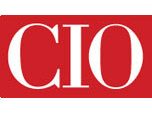As Infosys Considers Purchasing Thomson Reuters’ Healthcare Business, it’s Time for a Thought Experiment
The Business Standard a couple of weeks ago reported that Infosys is close to acquiring Thomson Reuters’ healthcare division in a US$700-750 million transaction. To be clear, I have no concrete evidence that Infosys will make this acquisition or is in fact seriously considering it. However, the industry rumors and news articles pose a fascinating and interesting puzzle.
On the surface, this potential acquisition seems strange and somewhat out of character for Infosys, which has until now eschewed growth through acquisition, preferring instead to grow rapidly through organic methods. An organization that has held resolutely firm to its talent excellence model and avoided distractions in related fields now seems to be preparing to break with past practices and enter the software and analytics space, in which it has little experience. A rich puzzle indeed – what factors could explain this change in approach?
As we begin this thought experiment, let us first consider why Infosys may be considering this bold move. Infosys is facing the unpleasant specter of a maturing industry in its core service offerings. Industry growth rates are slowing, the terms of competition are shifting, and other firms such as TCS and Cognizant are threatening to displace it as the industry leader.
Infosys, which led the way in pioneering the high quality labor arbitrage services space, finds itself – as does the rest of the industry – coming to grips with the limits of the model. The great fear is that clients will start pressuring price and, in so doing, bring down the impressive margins Infosys and other players have been able to post over the last ten years. In addition to pricing and margin issues, the industry faces growing pressure from its client base to increase the value of its offerings beyond labor arbitrage.
Infosys may feel the Thomson Reuters acquisition creates a mechanism to address these issues in two important ways. First, it may provide a way for it to best Cognizant and TCS by moving further into the attractive, highly growth-oriented healthcare vertical. Perhaps it believes that Thomson Reuters’ substantial healthcare customer and revenue base, and its IP, will immediately make it an even more important industry player, and provide an effective base into which is can cross sell its traditional services.
Second, it may see the acquisition as a way to gain a working book of business and instant learning’s in the services industry’s holy grail…the non-linear business. For those of you who are not familiar with the term, “non-linear business” refers to services businesses that are not priced and measured by labor but instead by a product or outcome. It is thought that a move to this type of business model can reignite growth and protect providers from price and margin pressure. Thomson Reuters’ book of business looks to be chock-full of non-linear software and analytics offerings that may provide the basis for Infosys’ acceleration into these types of business models. The cream on the cake may be Infosys’ belief that it can take substantial cost out of Thomson Reuters’ business model by applying its formidable ability to move much of the production work to its proven talent factories in low cost India.
Now let us explore some of the challenges Infosys will face if it chooses to consummate the transaction. It will quickly find vast dissimilarities between the healthcare business and its traditional service lines. In a talent factory or consulting service line, operational excellence is driven by building a highly leveraged talent pyramid, with focused investments on productivity tools and a large recruiting engine that can continuously supply a steady stream of cheap new talent. On the other hand, software and related businesses leverage highly specialized talent teams, and they rigorously attempt to keep as stable as possible.
The investment philosophies and strategies between the two types of models are also very different; service providers think in terms of investments in sales and account teams with quick pay offs, while software-related firms make larger bets in IP which are monetized over years and sometimes decades. There are marked disparities between their channels to market and sales mechanisms, with service providers minimizing marketing dollars in favor of high-powered problem solving teams and software firms investing lavishly in marketing product positioning and utilizing aggressive order taking sales forces. Finally, the stakeholder groups that purchase and utilize the respective services and products are different and often unrelated, making cross selling between services and products a challenging and frequently unrewarding experience.
As we reflect on the implication of this thought experiment, it is clear that Infosys and the overall services industry face high stakes and business changing choices. They must make bold moves to mitigate the effects of the maturing services industry, but doing so may lead them into spaces in which they have little experience and whose synergies they hope to exploit prove challenging to capture.
With such a conundrum, and it will be interesting to see what Infosys does with Thomson Reuters’ healthcare business and how other providers address similar pressures as they look to evolve their business models and client relationships.


